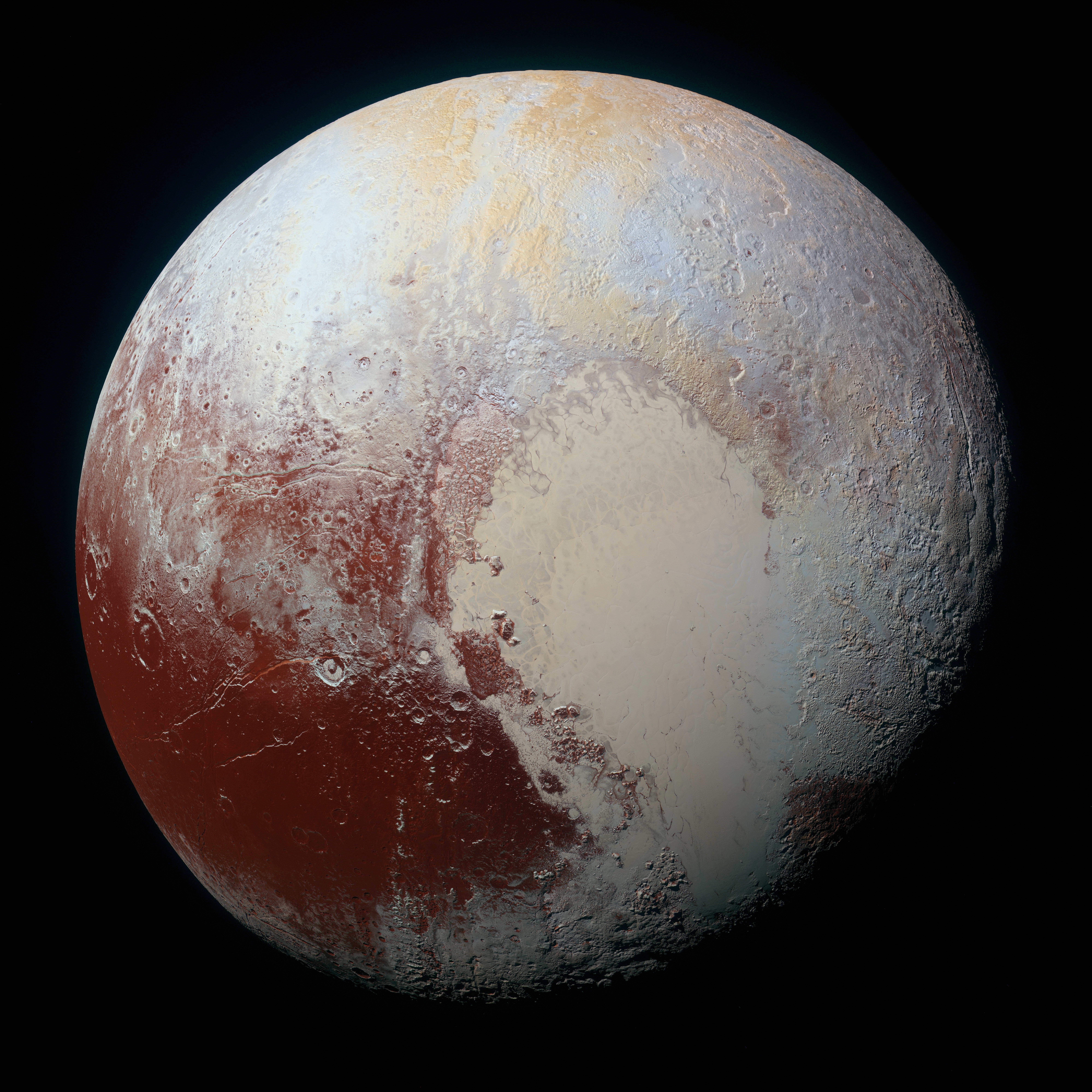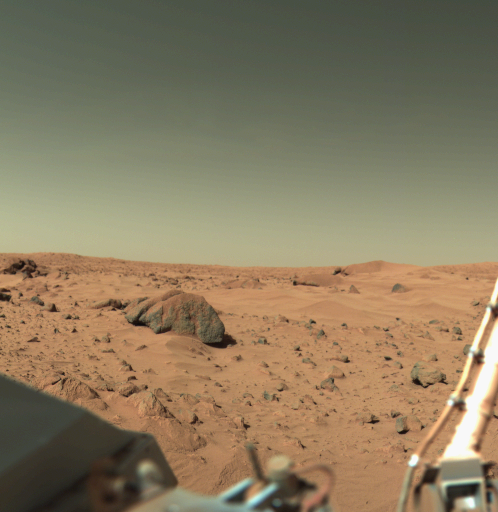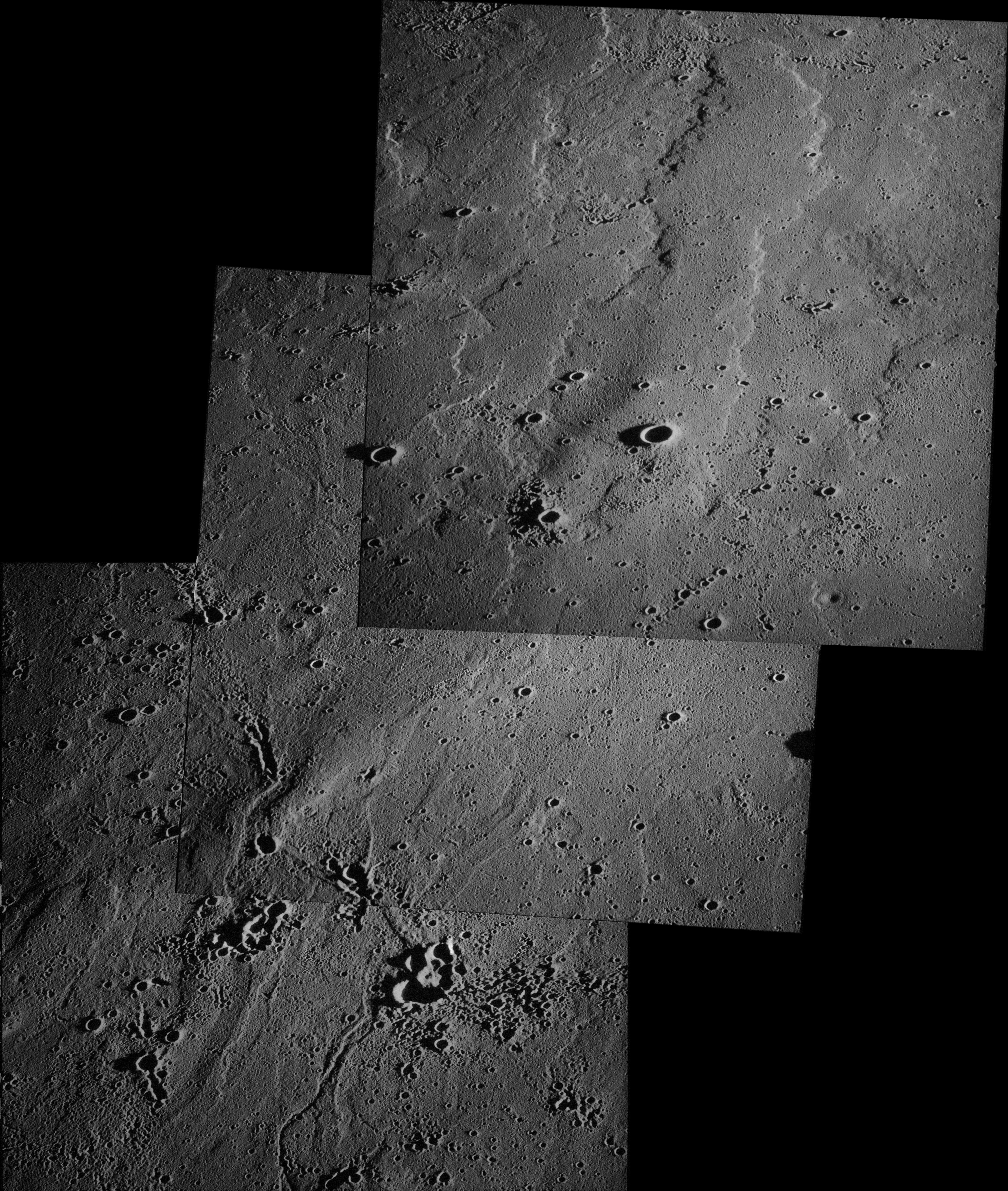|
Wrinkle-ridge
A wrinkle ridge is a type of feature commonly found on lunar maria, or basalt plains. These features are low, sinuous ridges formed on the mare surface that can extend for up to several hundred kilometers. Wrinkle ridges are tectonic features created after the lava cooled and solidified. They frequently outline ring structures buried within the mare, follow circular patterns outlining the mare, or intersect protruding peaks. They are sometimes called ''veins'' due to their resemblance to the veins that protrude from beneath the skin. Wrinkle ridges are named with the Latin designation ''dorsum'' (plural ''dorsa''). The standard International Astronomical Union, IAU Planetary nomenclature, nomenclature uses the names of people (generally scientists) to identify wrinkle ridges on the Moon. For example, the Dorsa Burnet are named for Thomas Burnet (theologian), Thomas Burnet, and the Dorsum Owen is named after George Owen of Henllys. Wrinkle ridges can also be found on Mars, for ... [...More Info...] [...Related Items...] OR: [Wikipedia] [Google] [Baidu] |
Planetary Nomenclature
Planetary nomenclature, like terrestrial nomenclature, is a system of uniquely identifying features on the surface of a planet or natural satellite so that the features can be easily located, described, and discussed. Since the invention of the telescope, astronomers have given names to the surface features they have discerned, especially on the Moon and Mars. To found an authority on planetary nomenclature, the International Astronomical Union (IAU) was organized in 1919 to designate and standardize names for features on Solar System bodies. IAU approval procedure When images are first obtained of the surface of a planet or satellite, a theme for naming features is chosen and a few important features are named, usually by members of the appropriate IAU task group (a commonly accepted planet-naming group). Later, as higher resolution images and maps become available, additional features are named at the request of investigators mapping or describing specific surfaces, fe ... [...More Info...] [...Related Items...] OR: [Wikipedia] [Google] [Baidu] |
Chryse Planitia
Chryse Planitia (Greek, "''Golden Plain''") is a smooth circular plain in the northern equatorial region of Mars close to the Tharsis region to the west, centered at . Chryse Planitia lies partially in the Lunae Palus quadrangle, partially in the Oxia Palus quadrangle, partially in the Mare Acidalium quadrangle. It is 1600 km or 994 mi in diameter and with a floor 2.5 km below the average planetary surface altitude, and has been suggested to be an ancient buried impact basin, though this is contested. It has several features in common with lunar maria, such as wrinkle ridges. The density of impact craters in the range is close to half the average for lunar maria. Chryse Planitia shows evidence of water erosion in the past, and is the bottom end for many outflow channels from the southern highlands as well as from Valles Marineris and the flanks of the Tharsis bulge. It is one of the lowest regions on Mars ( below the mean surface elevation of Mars), so water w ... [...More Info...] [...Related Items...] OR: [Wikipedia] [Google] [Baidu] |
Wrinkles Si
A wrinkle, also known as a rhytid, is a fold, ridge or crease in an otherwise smooth surface, such as on skin or fabric. Skin wrinkles typically appear as a result of ageing processes such as glycation, habitual sleeping positions, loss of body mass, sun damage, or temporarily, as the result of prolonged immersion in water. Age wrinkling in the skin is promoted by habitual facial expressions, aging, sun damage, smoking, poor hydration, and various other factors. In humans, it can also be prevented to some degree by avoiding excessive solar exposure and through diet (in particular through consumption of carotenoids, tocopherols and flavonoids, vitamins (A, C, D and E), essential omega-3-fatty acids, certain proteins and lactobacilli). Skin Causes for aging wrinkles Development of facial wrinkles is a kind of fibrosis of the skin. Misrepair-accumulation aging theory suggests that wrinkles develop from incorrect repairs of injured elastic fibers and collagen fibers. Repeat ... [...More Info...] [...Related Items...] OR: [Wikipedia] [Google] [Baidu] |
Jupiter
Jupiter is the fifth planet from the Sun and the List of Solar System objects by size, largest in the Solar System. It is a gas giant with a Jupiter mass, mass more than 2.5 times that of all the other planets in the Solar System combined and slightly less than one-thousandth the mass of the Sun. Its diameter is 11 times that of Earth and a tenth that of the Sun. Jupiter orbits the Sun at a distance of , with an orbital period of . It is the List of brightest natural objects in the sky, third-brightest natural object in the Earth's night sky, after the Moon and Venus, and has been observed since prehistoric times. Its name derives from that of Jupiter (god), Jupiter, the chief deity of ancient Roman religion. Jupiter was the first of the Sun's planets to form, and its inward migration during the primordial phase of the Solar System affected much of the formation history of the other planets. Jupiter's atmosphere consists of 76% hydrogen and 24% helium by mass, with a denser ... [...More Info...] [...Related Items...] OR: [Wikipedia] [Google] [Baidu] |
Lunar Reconnaissance Orbiter
The Lunar Reconnaissance Orbiter (LRO) is a NASA robotic spacecraft currently orbiting the Moon in an eccentric Polar orbit, polar mapping orbit. Data collected by LRO have been described as essential for planning NASA's future human and robotic missions to the Moon. Its detailed mapping program is identifying safe landing sites, locating potential resources on the Moon, characterizing the radiation environment, and demonstrating new technologies. Launched on June 18, 2009, in conjunction with the LCROSS, Lunar Crater Observation and Sensing Satellite (LCROSS), as the vanguard of NASA's Lunar Precursor Robotic Program, LRO was the first United States mission to the Moon in over ten years. LRO and LCROSS were launched as part of the United States's Vision for Space Exploration program. The probe has made a 3-D map of the Moon's surface at 100-meter resolution and 98.2% coverage (excluding polar areas in deep shadow), including 0.5-meter resolution images of Apollo landing sites. ... [...More Info...] [...Related Items...] OR: [Wikipedia] [Google] [Baidu] |
Mare Fecunditatis
Mare Fecunditatis (Latin ''fēcunditātis'', the "Sea of Fecundity" or "Sea of Fertility") is a lunar mare in the eastern half of the visible Moon. The mare has a maximum diameter of 840 km. __NOTOC__ Description The Fecunditatis basin formed in the Pre-Nectarian epoch, while the basin material surrounding the mare is of the subsequent Nectarian epoch. The mare material is of the Upper Imbrian epoch and is relatively thin compared to the neighboring Mare Crisium or Mare Tranquillitatis. This basin is overlapped with the Nectaris, Tranquillitatis, and Crisium basins. Fecunditatis basin meets Nectaris basin along Fecunditatis' western edge, with the area along this zone faulted by arcuated grabens. On the eastern edge of Fecunditatis is the crater Langrenus. Near the center lie the interesting craters Messier and Messier A. It was here that the first automated sample return took place via the Luna 16 probe, in September 1970. Sinus Successus lies along the eastern edge of t ... [...More Info...] [...Related Items...] OR: [Wikipedia] [Google] [Baidu] |
Dorsa Geikie
Dorsa Geikie is a wrinkle ridge at in Mare Fecunditatis on the Moon. It is approximately 220 km long and was named after Scottish geologist Sir Archibald Geikie in 1976 by the International Astronomical Union, IAU. Gazetteer of Planetary Nomenclature, International Astronomical Union (IAU) Working Group for Planetary System Nomenclature (WGPSN) References External links LAC-80 Lunar Chart Ridges on the Moon Mare Fecunditatis {{moon-stub ... [...More Info...] [...Related Items...] OR: [Wikipedia] [Google] [Baidu] |
Apollo 17
Apollo 17 (December 7–19, 1972) was the eleventh and final mission of NASA's Apollo program, the sixth and most recent time humans have set foot on the Moon. Commander Gene Cernan and Lunar Module Pilot Harrison Schmitt walked on the Moon, while Command Module Pilot Ronald Evans (astronaut), Ronald Evans orbited above. Schmitt was the only professional geologist to land on the Moon; he was selected in place of Joe Engle, as NASA had been under pressure to send a scientist to the Moon. The mission's heavy emphasis on science meant the inclusion of a number of new experiments, including a Fe, Fi, Fo, Fum, and Phooey, biological experiment containing five mice that was carried in the command module. Mission planners had two primary goals in deciding on the landing site: to sample Lunar highlands, lunar highland material older than that at Mare Imbrium and to investigate the possibility of relatively recent Volcano, volcanic activity. They therefore selected Taurus–Littrow, wh ... [...More Info...] [...Related Items...] OR: [Wikipedia] [Google] [Baidu] |
Dorsum Heim
Dorsum Heim is a wrinkle ridge at in Mare Imbrium on the Moon. It is 148 km long and was named after Swiss geologist Albert Heim Albert Heim (12 April 184931 August 1937) was a Swiss geologist, noted for his three-volume ''Geologie der Schweiz''. Born in Zürich, he was educated at Zürich and Berlin universities. Very early in life he became interested in the physical fe ... in 1976. References {{DEFAULTSORT:Heim Dorsum Ridges on the Moon Mare Imbrium ... [...More Info...] [...Related Items...] OR: [Wikipedia] [Google] [Baidu] |
Mare Imbrium
Mare Imbrium (Latin ''imbrium'', the "Sea of Showers" or "Sea of Rains") is a vast lunar mare, lava plain within the Imbrium Basin on the Moon and is one of the larger craters in the Solar System. The Imbrium Basin formed from the collision of a Protoplanet, proto-planet during the Late Heavy Bombardment. Basaltic lava later flooded the giant Impact crater, crater to form the flat volcanic plain seen today. The basin's age has been estimated using Uranium–lead dating, uranium–lead dating methods to approximately 3.9 billion years ago, and the diameter of the impactor has been estimated to be 250 ± 25 km. The Moon's maria (plural of Lunar mare, mare) have fewer features than other areas of the Moon because molten lava pooled in the craters and formed a relatively smooth surface. Mare Imbrium is not as flat as it would have originally been when it first formed as a result of later events that have altered its surface. Origin Mare Imbrium formed when a proto-planet ... [...More Info...] [...Related Items...] OR: [Wikipedia] [Google] [Baidu] |
Dorsum Zirkel
image:Dorsum Zirkel AS15-M-1554.jpg, Oblique view of Dorsum Zirkel from Apollo 15, taken at a low sun angle Dorsum Zirkel is a wrinkle ridge at northeast of Mons La Hire in Mare Imbrium on the Moon. It is 193 km long and was named after German geologist Ferdinand Zirkel in 1976. Gazetteer of Planetary Nomenclature, International Astronomical Union (IAU) Working Group for Planetary System Nomenclature (WGPSN) Two small craters, La Hire A and B, lie on either side of the dorsum. The large crater Lambert (lunar crater), Lambert is to the southeast, and the smaller McDonald (crater), McDonald is to the northeast. References External links {{DEFAULTSORT:Zirkel Ridges on the Moon Mare Imbrium ...[...More Info...] [...Related Items...] OR: [Wikipedia] [Google] [Baidu] |
Apollo 15
Apollo 15 (July 26August 7, 1971) was the ninth crewed mission in the Apollo program and the fourth Moon landing. It was the first List of Apollo missions#Alphabetical mission types, J mission, with a longer stay on the Moon and a greater focus on science than earlier landings. Apollo 15 saw the first use of the Lunar Roving Vehicle. The mission began on July 26 and ended on August 7, with the lunar surface exploration taking place between July 30 and August 2. Apollo Commander, Commander David Scott and Lunar Module Pilot James Irwin landed near Hadley–Apennine#Rima Hadley, Hadley Rille and explored the local area using the rover, allowing them to travel further from the Apollo Lunar Module, Lunar Module than had been possible on previous missions. They spent 18 hours on the Moon's surface on four extravehicular activities (EVA), and collected of surface material. At the same time, Command Module Pilot Alfred Worden orbited the Moon, operating the sensors in the scie ... [...More Info...] [...Related Items...] OR: [Wikipedia] [Google] [Baidu] |









